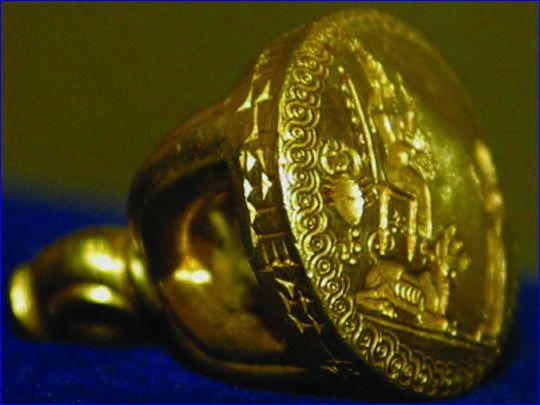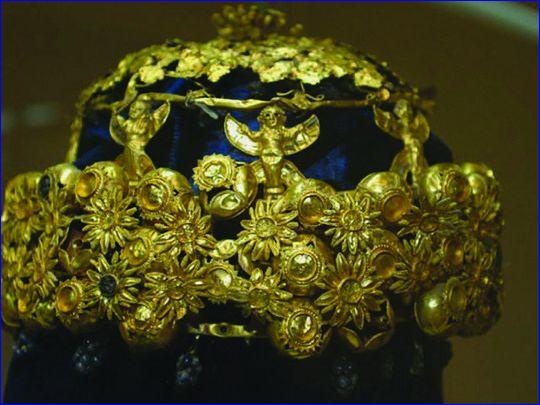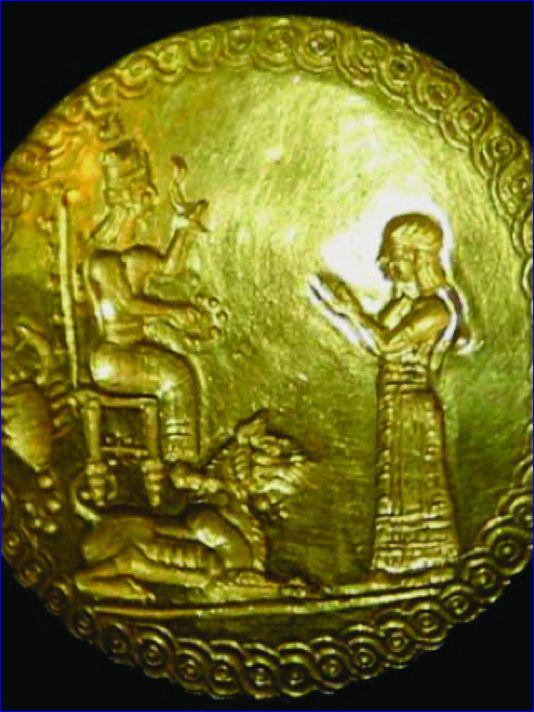


 Sgt Noreen L. Feeney, 318th Public Affairs Operation Center (PAOC), US Army)
Sgt Noreen L. Feeney, 318th Public Affairs Operation Center (PAOC), US Army)
Hama died young, and perhaps suddenly, hinting at why she was interred in a bronze coffin rather than the usual stone sarcophagus. She was no more than 20, but the gold crowns and other riches in her grave signal her power and wealth.
"She was so young when she died, and we don't know how," says Tracy Spurrier of the University of Toronto in Canada, author of a recent study identifying Hama. But "she was clearly an important person, and she deserves to be remembered."
Related: Assyrian Treasures from the city of Kalhu (Nimrud)
Hama was queen of Assyria, an empire based in what is now Iraq and stretching as far as Egypt. Hama probably left politics to her husband, King Shalmaneser IV, who ruled during the mid 8th-century BC.
But Assyrian queens were "the holders of the wealth of the household," controlling the royal residence and property, says Mark Altaweel of Britain's University College London, who was not part of the study.
Hama was entombed near other queens at the sprawling Northwest Palace in the Assyrian capital of Nimrud, near present-day Mosul. Discovered by Iraqi archaeologists nearly 30 years ago, Hama's coffin held a breathtaking array of riches, including chunky gold anklets, a beautifully worked gold jug and jeweled rings.
Amid the hoard was the nearly complete skeleton of a short, slender woman. On her head was a delicate gold crown depicting pomegranates, flowers and female winged genies. By her side was a gold stamp seal like those used to stamp documents. The script on it read in part, "Belonging to Hama, queen of Shalmaneser."

 Sgt Noreen L. Feeney,, 318th Public Affairs Operation Center (PAOC), US Army)
Sgt Noreen L. Feeney,, 318th Public Affairs Operation Center (PAOC), US Army)
But scholars missed the connection between the stamp and the skeleton. There was also a mistaken belief that the coffin, like two others found close to Hama's, held only jumbled remains, says the study in the Journal of Near Eastern Studies.
Poring over documents about the Nimrud burials, Spurrier realized the seal had been near the young woman's neck, suggesting it had been worn as a pendant. A seal is a deeply personal item, and its presence implies the woman found with it was Hama herself, Spurrier argues.

 Sgt Noreen L. Feeney, 318th Public Affairs Operation Center (PAOC), US Army)
Sgt Noreen L. Feeney, 318th Public Affairs Operation Center (PAOC), US Army)
The seal's inscription was translated years ago, says McGuire Gibson of the University of Chicago, who was not part of the study, but "its importance had not been noticed. ... Ms. Spurrier was clever in seeing what had been ignored by others."
It will be difficult to prove that the woman is Hama, but Spurrier's arguments are "quite convincing," says David Kertai of the Martin Buber Society of Fellows in Jerusalem, also not part of the study. Though little is known of Hama herself, Assyrian queens "had huge estates and households. ... (and) were actually quite powerful in their own way."
That power supposedly extended after death. Near Hama's coffin was a tablet written with a curse warning, "Anyone later who removes my throne ... may his spirit receive no bread!" But the curse, which was installed for another queen, didn't stop Islamic State fighters. They blew up part of the Northwest Palace with barrel bombs in 2015 and wrecked Mosul's museum, which held Hama's bronze coffin.
Hama's skeleton, at least, was in Baghdad's museum, and Spurrier hopes it still is.
"I feel very close to her now, if you can say that about someone long dead," she says. "She was prominent in life. Let's remember her."

or register to post a comment.